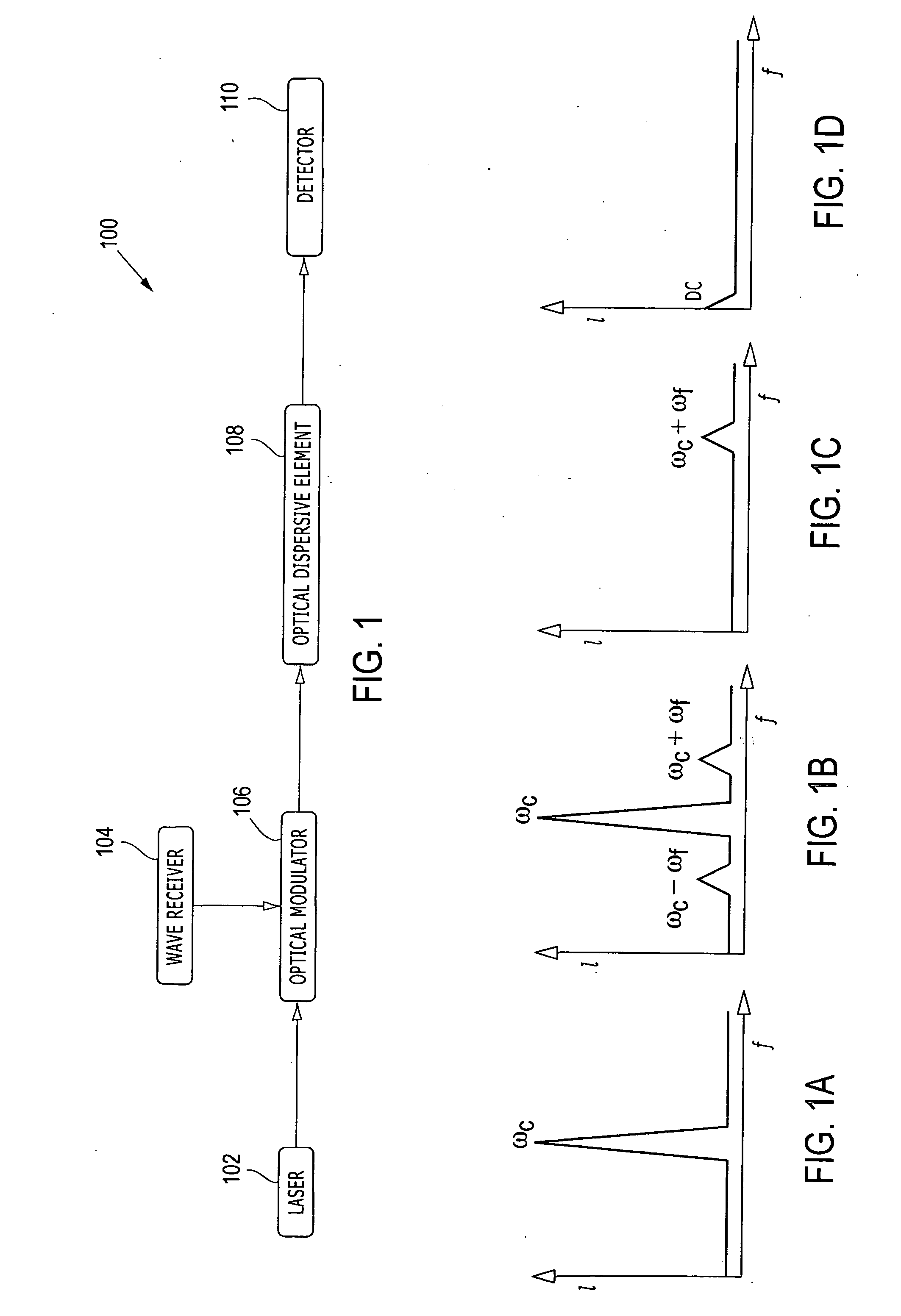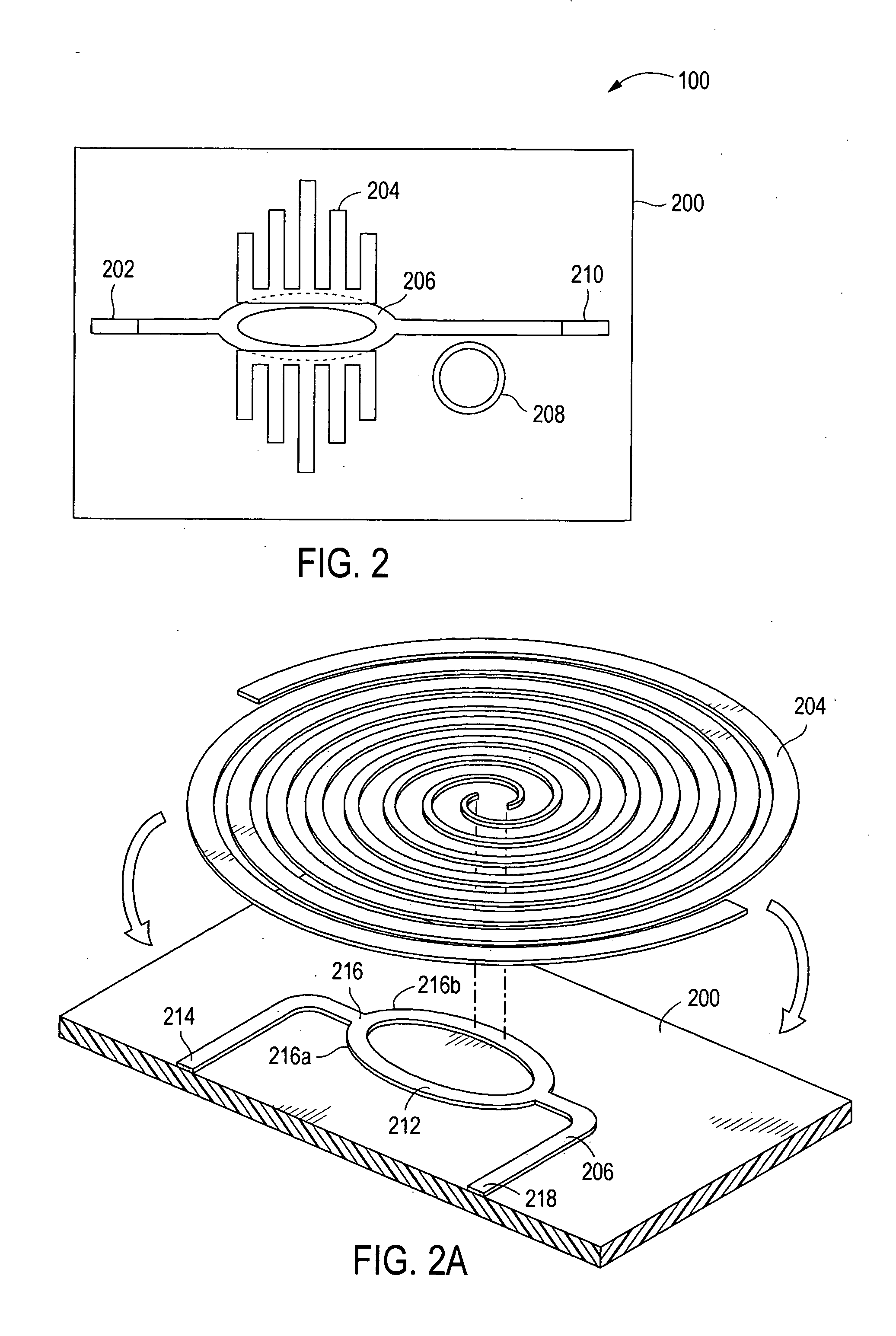Wave detection methods and apparatus
a wave detection and wave technology, applied in the field of wave detection, can solve the problems of high cost of systems that incorporate this technology, inconvenient operation, and inability to meet the sensitivity requirements of many applications,
- Summary
- Abstract
- Description
- Claims
- Application Information
AI Technical Summary
Benefits of technology
Problems solved by technology
Method used
Image
Examples
Embodiment Construction
[0012]FIG. 1 depicts a block diagram of a wave detector 100 for use in providing an overview of the present invention. The wave detector 100 is described below with reference to FIGs. 1A-1D, which conceptually illustrates photon intensity (I) versus frequency (f) at various positions within the wave detector 100.
[0013] In general overview, a laser 102 generates an optical carrier signal having a carrier frequency, ωc, which is illustrated in FIG. 1A. A wave receiver 104 receives one or more wave signals at one or more corresponding detection frequencies, ωf, e.g., millimeter-waves and / or microwaves. A optical modulator 106 is configured to modulate the optical carrier signal with the desired wave signals, which transfers energy from the desired wave signals into sidebands of the optical carrier signal, e.g., at ωc+ωf and ωc−ωf, which is illustrated in FIG. 1B. An optical dispersive element 108 removes the carrier signal frequency component (and optionally one of the sidebands) from...
PUM
 Login to View More
Login to View More Abstract
Description
Claims
Application Information
 Login to View More
Login to View More - R&D Engineer
- R&D Manager
- IP Professional
- Industry Leading Data Capabilities
- Powerful AI technology
- Patent DNA Extraction
Browse by: Latest US Patents, China's latest patents, Technical Efficacy Thesaurus, Application Domain, Technology Topic, Popular Technical Reports.
© 2024 PatSnap. All rights reserved.Legal|Privacy policy|Modern Slavery Act Transparency Statement|Sitemap|About US| Contact US: help@patsnap.com










